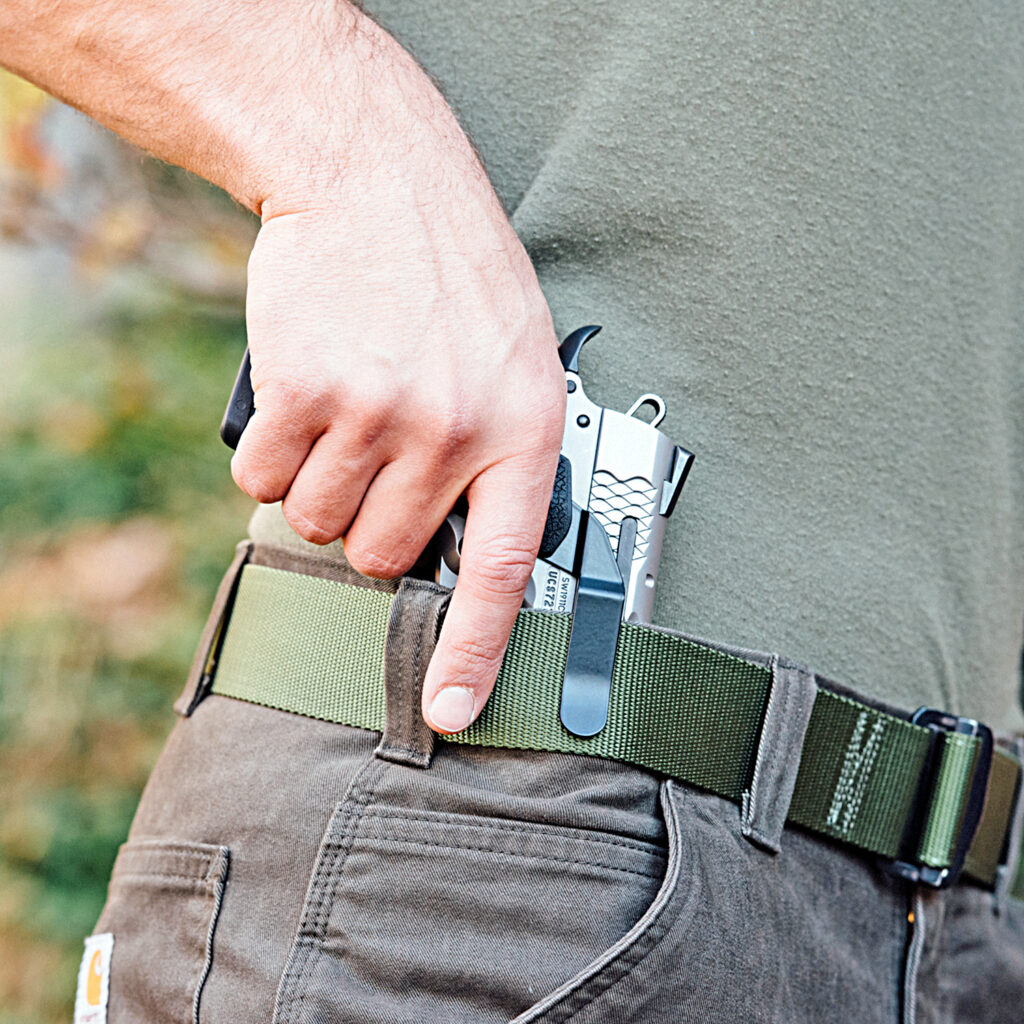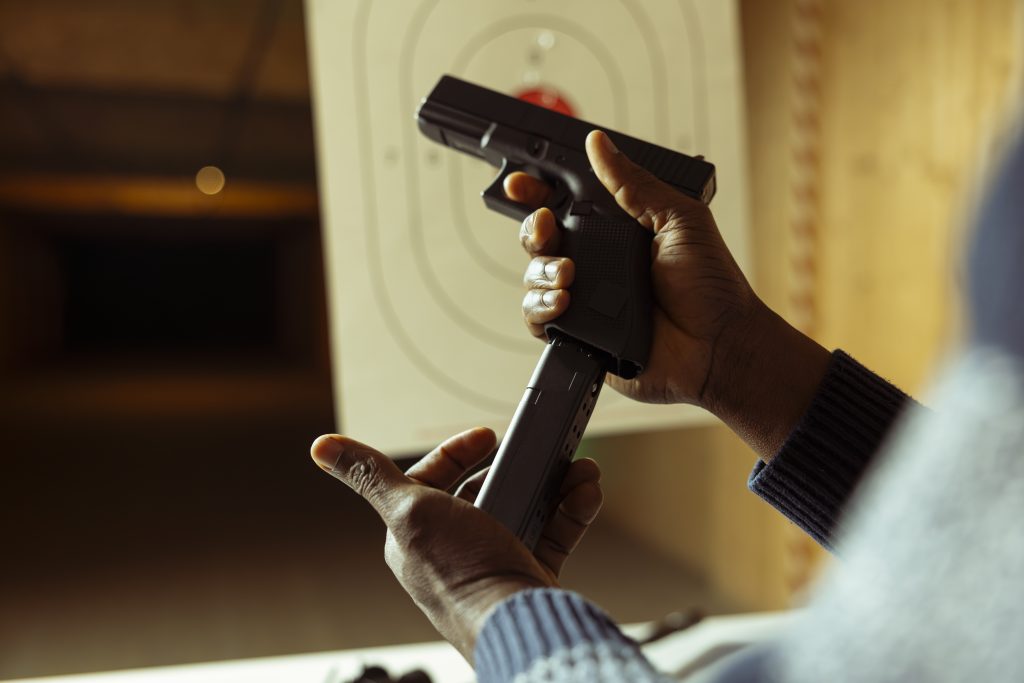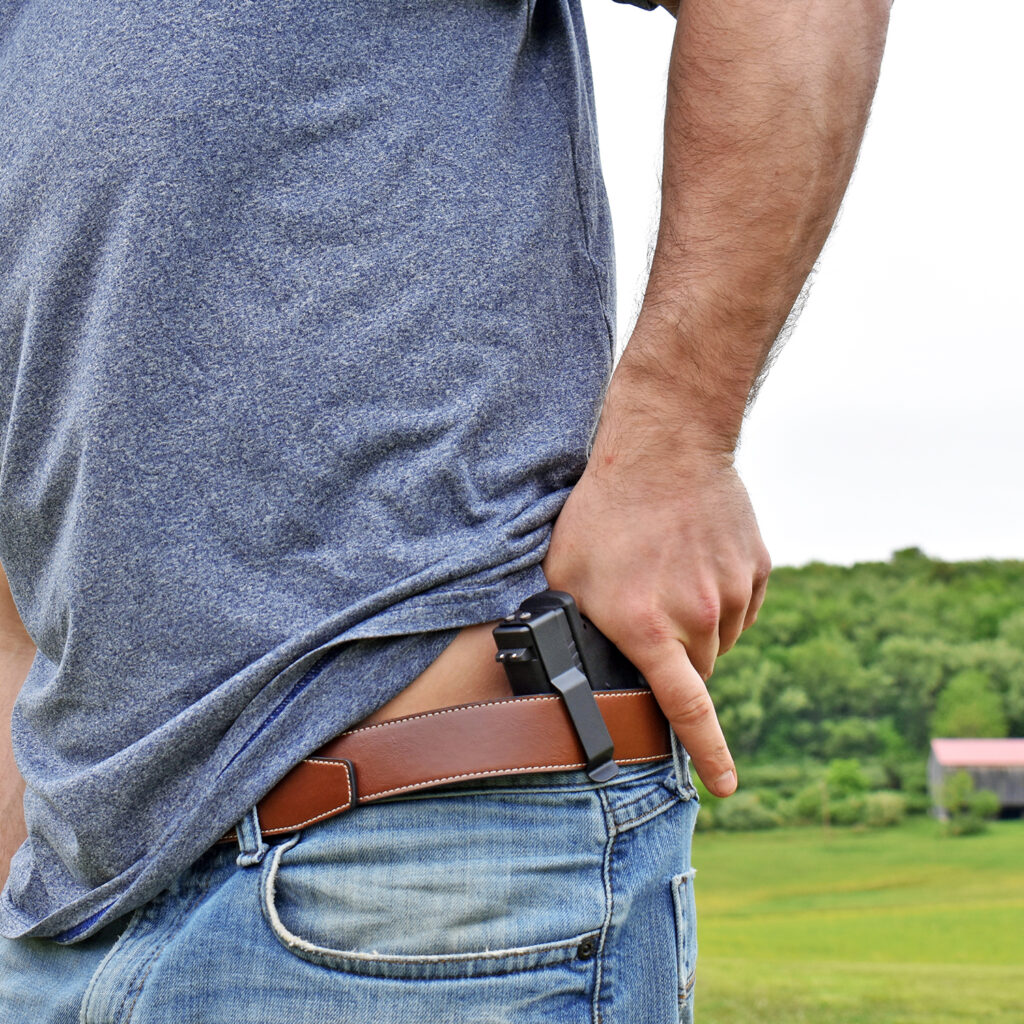In a previous post, we discussed the essential 10 Do’s and Don’ts of Concealed Carry to help ensure you’re following best practices. This time, we’re diving deeper with additional concealed carry tips to enhance your experience and safety.
Do: Practice in a Safe, Private Area
Before heading out in public, practice carrying and drawing your firearm in a safe, private space.
Ensure the gun is unloaded and no live ammo is nearby. Get comfortable with the firearm’s feel and weight by walking, running, bending, sitting, and laying down. For example, if you carry a Glock 17 in an Appendix Inside the Waistband (AIWB) holster with a sidecar for an extra mag, practice tying your shoes to adapt to your new carrying method.
Do: Inform Police Officers if Pulled Over
Honesty is crucial during interactions with police officers.
Always disclose that you’re carrying a loaded firearm, even if it’s not mandated by state law. Hand over your driver’s license, registration, and carry permit simultaneously to avoid surprises.
For increased safety, keep your hands visible at all times to ensure a smooth interaction.
Do: Consider Concealed Carry Insurance
Given the scrutiny gun owners face today, concealed carry insurance is a wise investment. It protects your livelihood and assets if you ever need to use your firearm for personal protection.
Do: Train with Licensed, Reputable Instructors
Meeting minimum licensing requirements is just the beginning. Continuous training is essential. Learn tactical shooting, self-defense, shooting from retention, and trauma care. Never stop enhancing your skills, as concealed carry is a lifestyle commitment.
Don’t: Perform Security Checks on Your Firearm in Public
Avoid drawing attention to your concealed firearm by performing “security checks” in public spaces and in front of others.
If you feel the need to check your firearm, reconsider your holster choice.
Confidence comes from knowing your holster’s capabilities. Carry an empty firearm at home and perform various activities to build trust in your equipment.
Don’t: Escalate Conflicts
With the power to take life comes the responsibility to avoid unnecessary confrontations. Stay calm and avoid escalating trivial disputes, such as traffic arguments or minor customer service issues. Your primary goal is to de-escalate and avoid violence.
Don’t: Clean Your Gun in Unsafe Environments
Clean your firearm at the range immediately after use, if possible. If not, find a location with a safe direction for the muzzle and ensure the area is secure.
Don’t: Use Poor Quality Holsters
A good holster is vital for safety, security, and accessibility. Avoid cheap, foreign-made holsters that may be uncomfortable and unreliable. The right holster ensures you can draw your firearm efficiently when needed.
Traditional holsters can be bulky and uncomfortable. Clipdraw offers a sleek alternative that attaches directly to your pistol, providing easy access and secure carry. Whether you have a Glock, Springfield XDS, M&P Shield, Ruger LCP, Model 1911, or Smith & Wesson J-Frame, Clipdraw fits seamlessly.
Stay On Track with Our Concealed Carry Tips
Reducing the amount of concealed carry issues involves continuous practice, honest communication with law enforcement, investing in insurance, and ongoing training with reputable instructors. Avoid unnecessary security checks and conflicts, ensure you clean your firearm safely, and invest in a high-quality holster. Clipdraw offers a unique alternative to traditional holsters, providing secure and comfortable firearm carry.
By following these tips and choosing the right equipment, you can enhance your concealed carry experience and ensure your safety and preparedness.


